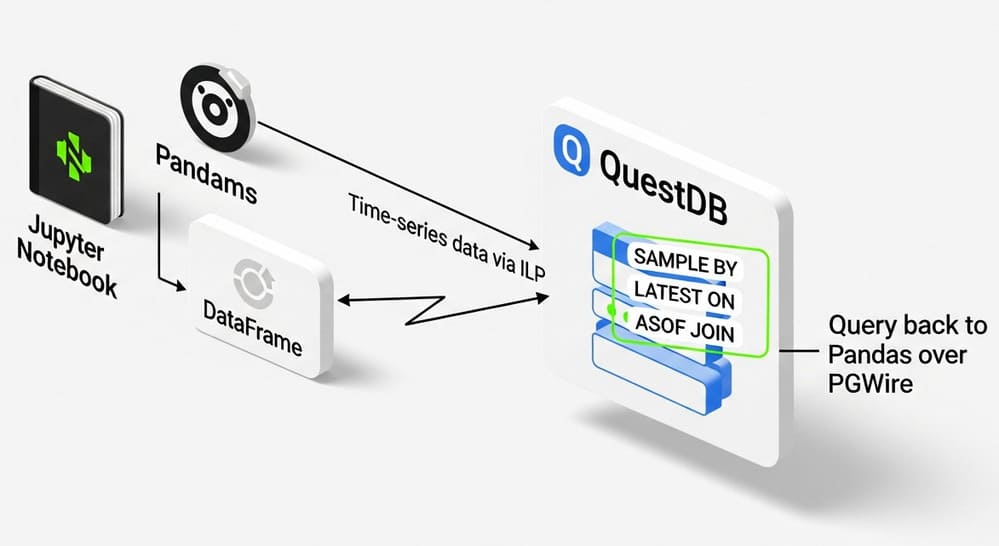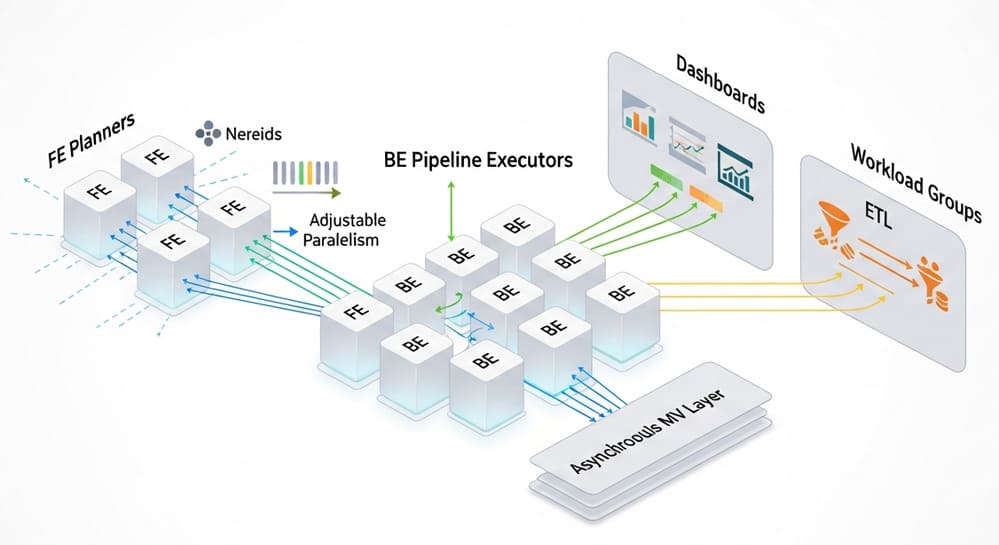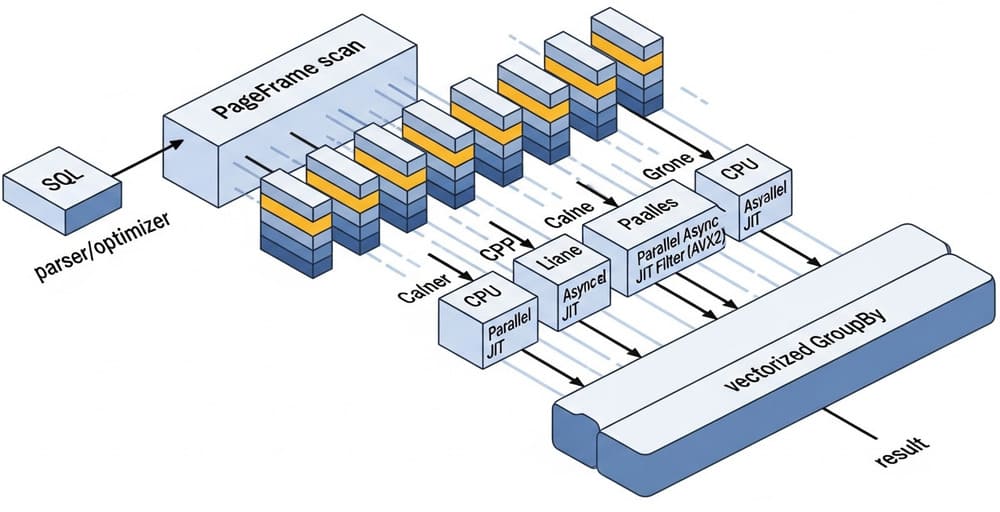Building Data Pipelines That Scale: Lessons from High-Volume Systems
In the world of data engineering, scalability isn’t just a buzzword; it’s a necessity. As datasets grow larger and more complex, the ability to design data pipelines that handle high-volume systems efficiently becomes critical. From batch processing to real-time analytics, scalability ensures your pipelines can keep up with increasing demands without breaking the bank or your infrastructure.
This article offers practical advice for building robust, scalable data pipelines, drawn from lessons learned in high-volume systems.
1. Understand Your Data and Workload
Before designing a pipeline, it’s essential to understand the nature of your data and the workload it will handle:
Key Questions to Ask:
- Volume: How much data are you processing daily, hourly, or in real-time?
- Velocity: Does your pipeline need to handle streaming data, or is it batch-oriented?
- Variety: What types of data are involved? Structured, semi-structured, or unstructured?
- Variability: How does the workload fluctuate over time?
Example:
- Uber: Uber processes millions of GPS signals every second to calculate ride fares and estimate arrival times. Understanding the velocity and variety of this data is key to designing pipelines that can handle such scale.
- Spotify: Spotify’s recommendation system analyzes user behavior and listening habits in near real-time, requiring a robust pipeline for high-velocity and high-variety data.
2. Modularize Your Pipeline
Building modular pipelines makes scaling and maintenance easier. Each module should have a single responsibility, allowing you to modify or scale individual components without disrupting the entire system.
Core Modules in a Pipeline:
- Ingestion: Responsible for collecting data from multiple sources.
- Processing: Handles transformations, cleansing, and feature engineering.
- Storage: Ensures data is stored in a scalable and accessible format.
- Output: Delivers processed data to end-users or downstream systems.
Example Tools:
- Ingestion: Apache Kafka, AWS Kinesis, Google Pub/Sub.
- Processing: Apache Spark, Flink, Databricks.
- Storage: Amazon S3, Google BigQuery, Delta Lake.
- Output: Tableau, Power BI, custom APIs.
Example:
- YouTube: YouTube’s modular data pipeline ingests millions of video uploads daily, processes metadata for search and recommendations, and stores the data for long-term retrieval and analysis.
3. Prioritize Scalability in Architecture
Scalable pipelines rely on a well-thought-out architecture that can handle increasing loads without significant redesigns.
Best Practices:
- Use Distributed Systems: Tools like Apache Spark and Hadoop distribute workloads across multiple nodes, enabling parallel processing.
- Adopt a Lakehouse Architecture: Combine the scalability of data lakes with the performance of data warehouses.
- Leverage Cloud Services: Use cloud-native solutions like AWS Glue, Snowflake, or BigQuery for elastic scaling.
Example:
- Netflix: Netflix processes petabytes of data daily using a distributed architecture built on Apache Kafka and Spark for real-time analytics.
- Airbnb: Airbnb’s data pipeline integrates Apache Airflow for orchestration, ensuring scalable and efficient data transformations across its global user base.
4. Optimize Data Storage
Efficient storage is a cornerstone of scalable pipelines. Poor storage choices can lead to bottlenecks and unnecessary costs.
Tips for Optimizing Storage:
- Partitioning: Divide datasets into logical segments for faster queries.
- Compression: Use formats like Parquet or ORC to reduce storage size and improve read/write performance.
- Data Retention Policies: Automate deletion or archiving of obsolete data to reduce storage bloat.
Example:
- Slack: Slack optimizes storage by archiving older conversations and compressing log files, enabling fast search and retrieval without bloating storage systems.
- Tesla: Tesla partitions vehicle sensor data by VIN and timestamp, ensuring efficient access for analytics and diagnostics.
5. Monitor and Automate
Monitoring and automation ensure your pipeline operates reliably and adapts to changing workloads.
Key Strategies:
- Set Up Real-Time Monitoring: Use tools like Prometheus, Grafana, or AWS CloudWatch to track pipeline performance and identify bottlenecks.
- Automate Scaling: Implement auto-scaling for compute resources using Kubernetes or cloud-native features.
- Use Workflow Orchestration: Tools like Apache Airflow or Prefect can automate pipeline workflows and ensure dependencies are met.
Example:
- Twitter: Twitter’s pipeline monitors real-time trends and adjusts compute resources dynamically during high-traffic events like global sports or political moments.
- Stripe: Stripe uses Airflow to orchestrate payment data pipelines, ensuring transactions are processed efficiently even during peak hours.
6. Design for Failure
Failures are inevitable in high-volume systems, but designing for failure ensures your pipeline recovers gracefully.
Best Practices:
- Implement Retry Logic: Automatically retry failed operations with exponential backoff.
- Use Idempotent Operations: Ensure repeated operations produce the same result, preventing duplicate processing.
- Log Everything: Maintain detailed logs for debugging and audit purposes.
Example:
- AWS: AWS’s data pipelines include robust retry mechanisms and detailed logging, ensuring fault tolerance for mission-critical applications.
- eBay: eBay designs idempotent pipelines for payment processing, ensuring transactions aren’t duplicated even during system failures.
7. Focus on Query Efficiency
Efficient queries prevent resource overuse and keep pipelines responsive, even under heavy loads.
Optimization Tips:
- Pre-Aggregate Data: Perform aggregations during preprocessing to reduce query complexity.
- Index Frequently Queried Fields: Use indexing to speed up lookups.
- Avoid Over-Querying: Cache results for repeated queries.
Example:
- Facebook: Facebook pre-aggregates engagement metrics for posts, enabling instant analytics for millions of users.
- Zillow: Zillow uses indexing and caching to deliver real-time property valuations while processing high query volumes.
8. Test at Scale
Always test your pipelines with realistic data volumes to uncover potential bottlenecks and scalability issues before they occur in production.
Testing Techniques:
- Load Testing: Simulate peak traffic to ensure the pipeline handles high loads.
- Chaos Engineering: Intentionally introduce failures to test resilience.
- A/B Testing: Experiment with pipeline configurations to find optimal setups.
Example:
- Amazon: Amazon’s pipeline undergoes rigorous load testing to ensure it handles Black Friday and Prime Day traffic spikes.
- Spotify: Spotify uses chaos engineering to test the resilience of its recommendation pipeline during major music release days.
Conclusion: Scaling with Confidence
Building data pipelines that scale requires thoughtful planning, modular design, and a focus on efficiency and resilience. By understanding your data, leveraging the right tools, and designing for scalability, you can create pipelines that handle even the most demanding workloads with ease.
What’s your biggest challenge in building scalable data pipelines? Share your thoughts and lessons learned in the comments below!











Leave a Reply